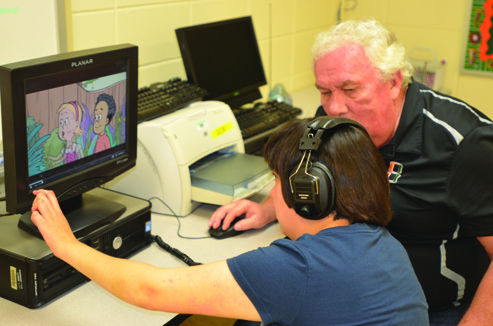HARLINGEN — “How do you tell me you want to eat a hot dog?”
Romisa Rangel, a speech pathologist, was spending a session with Michael Lopez, 15, who has autism.
Michael immediately came off as a rather affable fellow. He’d smile, lean back, sometimes put his index fingers to his ears. He’s nonverbal, but he knew exactly what picture to point to on the iPad, which currently had the Gabby Tabs app.
The app displays pictures of simple subjects like an apple or a banana on the iPad screen. It’s designed for children with communication difficulties.
“How do you tell me you are hungry?” asked Rangel in her office at Mercy Kids Rehab at 2117 E. Tyler Ave.
Color filled her office, with pictures of planets and solar systems. The word “Listen” was written alongside the picture of a red owl surrounded by bright yellow.
The Gabby Tabs app is one way instructors and specialists help children with autism find their voice. That voice can be heard through numerous teaching devices. Each strategy can be tailored to meet the specific needs of that child. Each is like a key through which the child can depart from the isolation of autism and speak to the outside world.
Rangel said she always hopes a student with autism will begin talking.
For the rest of this story and many other EXTRAS, go to our premium site, www.MyValleyStar.com.
Subscribe to it for only $6.99 per month or purchase a print subscription and receive the online version free, which includes an electronic version of the full newspaper and extra photo galleries, links and other information you can’t find anywhere else.
EDITOR’S NOTE: This story is part 2 of a series on autism the Valley Morning Star is running during April, which is National Autism Awareness Month.




